Introduction
In the vast expanse of literary creativity, the modern novel stands tall as one of the most influential and transformative genres. With its roots dating back centuries, the novel has undergone significant changes, shaping and reflecting the social, cultural, and political fabric of its time. This article takes you on a journey through time, delving into the defining characteristics of the modern novel, its rich history, and its development in each decade since the 1950s, adorned with examples of renowned authors and their influential works.
Defining the Modern Novel
The term “modern novel” refers to a literary form that emerged during the late 19th and early 20th centuries, departing from the classical storytelling structures prevalent in earlier works. While the novel as a literary genre has existed for centuries, the modern novel is distinguished by its departure from traditional narrative conventions and its focus on capturing the complexities of the human experience in the rapidly changing modern world.
One of the defining characteristics of the modern novel is its exploration of the individual’s psyche. Rather than relying solely on external events and actions, modern novelists delve deep into the thoughts, emotions, and motivations of their characters, giving readers a profound insight into the human condition.
Another key feature of the modern novel is its experimentation with narrative techniques. Shifting perspectives, stream-of-consciousness narration, nonlinear storytelling, and unreliable narrators are some of the narrative devices frequently employed to create a sense of immediacy and intimacy with the characters.
Furthermore, the modern novel often centers around everyday life and ordinary people, presenting a more relatable and authentic portrayal of the world. This focus on realism allows modern novels to serve as mirrors to society, reflecting the joys, struggles, and complexities of the human experience.
Pre-1950s: Pioneering the Path to Modernity
Before delving into the developments of the modern novel from the 1950s onwards, it is essential to explore the foundations laid by early writers who pioneered the path to modernity. While the modern novel as we know it began to take shape in the late 19th and early 20th centuries, its roots can be traced back to the earlier works that experimented with narrative techniques and explored the complexities of the human psyche.
The 18th and 19th Centuries: Precursors to Modernism
The 18th and 19th centuries were crucial periods in the evolution of the novel. During this time, writers began to experiment with innovative narrative structures and explore themes of individuality and social change.
One of the seminal works of this era is Daniel Defoe’s “Robinson Crusoe” (1719), often regarded as one of the first English novels. The novel tells the story of a shipwrecked sailor, Robinson Crusoe, who finds himself stranded on a deserted island. Defoe’s use of first-person narration and realistic details set a precedent for the immersive and introspective storytelling that would become characteristic of the modern novel.
The 19th Century: Romanticism and Realism
The 19th century saw the rise of two dominant literary movements: Romanticism and Realism. Both of these movements contributed significantly to the development of the modern novel.
Romanticism, with its emphasis on emotion, individualism, and nature, inspired writers to delve into the complexities of human emotions and psychological landscapes. Mary Shelley’s “Frankenstein” (1818) is a seminal work of Romantic literature, exploring themes of ambition, creation, and the consequences of playing God. Through its epistolary format and multiple narrators, “Frankenstein” foreshadowed the use of multiple perspectives and narrative complexity that would later become prominent features of the modern novel.
In contrast, the Realist movement sought to present a truthful and unvarnished depiction of contemporary society. Charles Dickens, one of the most celebrated authors of the 19th century, became a master of Realist storytelling. His novel “Great Expectations” (1861) offers a vivid portrayal of the struggles and aspirations of its protagonist, Pip, while also delving into themes of social class, identity, and the human capacity for change. Dickens’ ability to create memorable characters and capture the social milieu of his time laid the groundwork for the modern novel’s focus on everyday life and ordinary people.

The Early 20th Century: Stream of Consciousness and Modernist Innovations
As the 20th century dawned, a wave of modernist innovations revolutionized the novel’s landscape. Modernist writers sought to break free from traditional narrative structures and experiment with new literary techniques.
One of the most notable contributions of this era was the stream-of-consciousness technique, which sought to represent the flow of a character’s thoughts and emotions in a continuous and unfiltered manner. Virginia Woolf’s “Mrs. Dalloway” (1925) is a seminal work in the stream-of-consciousness tradition. The novel follows a single day in the life of Clarissa Dalloway, and through her inner monologue, Woolf delves into themes of memory, identity, and the passage of time.
James Joyce’s “Ulysses” (1922) is another monumental work of modernist literature that pushed the boundaries of narrative experimentation. Set over the course of a single day in Dublin, Ireland, the novel weaves together multiple perspectives and employs an array of narrative styles. Joyce’s innovative use of language, complex structure, and exploration of the human mind’s inner workings exemplify the modernist spirit that would become a hallmark of the modern novel.
The 1950s: Realism and Existentialism
The 1950s witnessed a literary landscape characterized by realism and existentialism. As the world emerged from the aftermath of World War II, writers grappled with the existential crisis of the individual in a seemingly indifferent universe. The works of authors like J.D. Salinger and Jack Kerouac exemplify the themes and styles of this era.
J.D. Salinger’s “The Catcher in the Rye” (1951) remains an enduring classic that explores the alienation and disillusionment experienced by the protagonist, Holden Caulfield. Through Holden’s introspective narration, Salinger offers a poignant portrayal of teenage angst and the struggle to find meaning in a world that often feels indifferent.

On the other hand, Jack Kerouac’s “On the Road” (1957) captures the spirit of the Beat Generation, which sought freedom, adventure, and rebellion against societal norms. The novel’s energetic and spontaneous prose, inspired by Kerouac’s own experiences on cross-country road trips, embodied the restlessness of a generation seeking authentic experiences beyond the confines of a conformist society.
The 1960s: Social and Political Turmoil
The 1960s brought seismic shifts in the novel’s landscape, mirroring the social and political upheavals of the era. The civil rights movement, the Vietnam War, and the counterculture movements shaped the themes explored by writers during this decade. Authors like Ken Kesey and Harper Lee left an indelible mark on the literary scene with their thought-provoking works.
Ken Kesey’s “One Flew Over the Cuckoo’s Nest” (1962) is a powerful critique of the dehumanizing nature of mental institutions. Through the eyes of Chief Bromden, a patient in a mental hospital, Kesey exposes the oppressive control exerted by authority figures, symbolized by the tyrannical Nurse Ratched. The novel challenges societal norms and raises questions about the nature of sanity and freedom.
Harper Lee’s “To Kill a Mockingbird” (1960) is an enduring classic that confronts racial prejudices and social injustice in the American South. Through the eyes of young Scout Finch, the novel explores themes of empathy, morality, and the search for justice in the face of deep-rooted racial tensions. “To Kill a Mockingbird” remains a timeless reminder of the importance of empathy and understanding in the fight against bigotry.
The 1970s: Postmodern Experimentation
With the dawn of the 1970s, the modern novel witnessed a surge in postmodern experimentation. Postmodernism, characterized by a self-conscious awareness of language and narrative, allowed authors to challenge traditional storytelling conventions and question the nature of reality itself.
Notable authors like Kurt Vonnegut and Gabriel Garcia Marquez redefined storytelling with their innovative works. Vonnegut’s “Slaughterhouse-Five” (1969) is a masterpiece of anti-war literature, weaving a nonlinear narrative that defies traditional chronology. Through the experiences of Billy Pilgrim, a World War II soldier who becomes “unstuck in time,” Vonnegut offers a unique perspective on the devastating effects of war and the human capacity for resilience.
Gabriel Garcia Marquez’s “One Hundred Years of Solitude” (1967) is a seminal work of magical realism, blending fantastical elements with a multigenerational family saga. Set in the fictional town of Macondo, the novel explores the cyclical nature of history, the passage of time, and the complexities of human relationships. Garcia Marquez’s lyrical prose and imaginative storytelling have made “One Hundred Years of Solitude” a beloved classic of world literature.
The 1980s: Multiculturalism and Identity
The 1980s embraced multiculturalism and diverse identities within the modern novel. With an increasing awareness of globalization and the interconnectedness of cultures, authors sought to represent the diverse experiences of people from various backgrounds.
Toni Morrison’s “Beloved” (1987) is a haunting and powerful exploration of the enduring impact of slavery on African American identity. Set in the years following the Civil War, the novel follows the story of Sethe, an escaped slave, and her haunted past. Morrison’s poetic prose and unflinching examination of the legacy of slavery have earned “Beloved” critical acclaim and a permanent place in the canon of American literature.
Salman Rushdie’s “Midnight’s Children” (1981) is a sweeping tale that intertwines historical events with magical elements. The novel follows the lives of individuals born at the stroke of midnight on India’s independence day, each gifted with unique powers. Through the allegorical narrative, Rushdie explores the complex history of India and the struggle for national identity in the postcolonial era.
The 1990s: Technological Advancements
As technology advanced in the 1990s, the modern novel adapted to the digital age. The increasing prevalence of computers and the internet influenced the ways in which writers approached storytelling and explored the human experience in a technologically driven world.
William Gibson’s “Neuromancer” (1984) is a seminal work in the cyberpunk genre, envisioning a future dominated by artificial intelligence, virtual reality, and cyberspace. The novel follows Case, a washed-up computer hacker, who is hired to pull off the ultimate hack. Gibson’s vision of a dystopian future, where the boundaries between human and machine blur, has proved remarkably prescient and influential in shaping the cyberpunk subgenre.
David Foster Wallace’s “Infinite Jest” (1996) is a sprawling and ambitious novel that captures the essence of contemporary American culture. Set in a not-so-distant future, the novel weaves multiple storylines, exploring themes of addiction, entertainment, and the search for meaning in a consumerist society. Wallace’s virtuosic prose and complex narrative structure have earned “Infinite Jest” a reputation as one of the most challenging and rewarding novels of its time.
The 2000s: Globalization and Fragmented Narratives
The turn of the millennium witnessed a surge in novels that explored the impacts of globalization and fragmented narratives. As the world became increasingly interconnected, writers sought to represent the complexities of a globalized society and the diverse experiences of people from different cultural backgrounds.
Zadie Smith’s “White Teeth” (2000) is a multilayered novel that celebrates multiculturalism and the complexities of contemporary life in London. The novel follows the lives of two families, one Bangladeshi and one English, and their intertwining stories over several decades. Through a blend of humor, insight, and a keen eye for social commentary, Smith offers a nuanced exploration of identity, immigration, and cultural heritage.
Jhumpa Lahiri’s “The Namesake” (2003) is a deeply resonant exploration of the immigrant experience within the Indian diaspora in the United States. The novel follows the journey of Gogol Ganguli, named after the famous Russian author, as he grapples with questions of identity and assimilation. Lahiri’s elegant prose and empathetic storytelling shed light on the universal struggles of finding one’s place in a new cultural landscape.
The 2010s: Diversity and Inclusivity
The 2010s brought a renewed focus on diversity and inclusivity within the modern novel. As the world became more aware of the need for representation and social justice, writers used their craft to address pressing social issues and amplify marginalized voices.
Chimamanda Ngozi Adichie’s “Americanah” (2013) is a powerful exploration of race, love, and identity, centering on the experiences of Ifemelu, a young Nigerian woman who moves to the United States to pursue higher education. Through Ifemelu’s blog posts and reflections on her experiences as an immigrant and as a Black woman in America, Adichie offers a searing commentary on race and cultural identity in the contemporary world.
Ta-Nehisi Coates’ “Between the World and Me” (2015) takes the form of a letter from the author to his teenage son, confronting the realities of being Black in America. Drawing on personal experiences, history, and social analysis, Coates provides a profound meditation on race, systemic racism, and the struggle for Black liberation. “Between the World and Me” became a critically acclaimed work that resonated with readers globally, sparking crucial conversations about race and social justice.
The Present and Beyond: Expanding Horizons
As we venture into the present and beyond, the modern novel continues to evolve, embracing new voices, themes, and forms of storytelling. The rapid advancement of technology, changing demographics, and pressing global challenges will undoubtedly influence the direction of the genre, ensuring its ongoing relevance in an ever-changing world.
Contemporary authors are increasingly embracing diverse perspectives, experimenting with narrative structures, and engaging with urgent social issues such as climate change, immigration, and mental health. Moreover, the rise of digital platforms and self-publishing has democratized the publishing process, allowing previously marginalized voices to reach a wider audience.
In conclusion, the modern novel, with its roots dating back to the 19th century, has evolved significantly over time, reflecting the diverse perspectives and concerns of each era. From its early days of realism and existentialism to the postmodern experimentation of the 1970s, the novel has continuously adapted to the challenges and opportunities of the times. Multiculturalism, technological advancements, and a focus on diversity have all left a lasting imprint on the genre. As we continue to explore the ever-expanding horizons of the modern novel, its power to captivate, challenge, and inspire readers remains steadfast, ensuring its place as a timeless and transformative art form. The journey of the modern novel is an ongoing one, marked by a deep appreciation for the diversity of human experiences and the boundless possibilities of storytelling.
- The Complex Fabric of “Slaughterhouse Five”
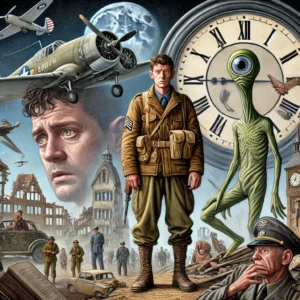 Kurt Vonnegut’s “Slaughterhouse Five,” published in 1969, is a seminal piece of literature that has captivated readers with its unique blend of science fiction, historical narrative, and existential ponderings. This essay will delve into the plot, themes, and comparable works to fully appreciate the depth and impact of this novel. Plot Summary “Slaughterhouse Five” tells …
Kurt Vonnegut’s “Slaughterhouse Five,” published in 1969, is a seminal piece of literature that has captivated readers with its unique blend of science fiction, historical narrative, and existential ponderings. This essay will delve into the plot, themes, and comparable works to fully appreciate the depth and impact of this novel. Plot Summary “Slaughterhouse Five” tells … - A Glimpse into the Revolutionary World of Transmetropolitan
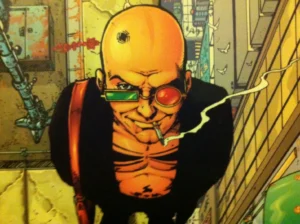 Delve into Warren Ellis’s “Transmetropolitan,” a dystopian masterpiece following journalist Spider Jerusalem’s quest in a corrupt metropolis. Ellis’s narrative brilliance and social commentary captivate readers, while vivid characters and themes resonate with contemporary society. “Transmetropolitan” stands as a landmark in graphic fiction, challenging conventions with its audacious storytelling.
Delve into Warren Ellis’s “Transmetropolitan,” a dystopian masterpiece following journalist Spider Jerusalem’s quest in a corrupt metropolis. Ellis’s narrative brilliance and social commentary captivate readers, while vivid characters and themes resonate with contemporary society. “Transmetropolitan” stands as a landmark in graphic fiction, challenging conventions with its audacious storytelling. - 5 Engaging Insights About “The Long Dark Teatime of the Soul” by Douglas Adams
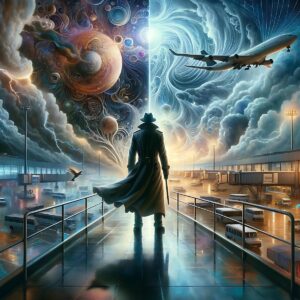 In “The Long Dark Teatime of the Soul,” Douglas Adams crafts a hilarious and thought-provoking tale featuring holistic detective Dirk Gently. As Dirk navigates absurd mysteries involving Norse gods and eccentric clients, Adams explores existential themes with wit and insight. The novel delights readers with its humor, quirky characters, and cosmic intrigue.
In “The Long Dark Teatime of the Soul,” Douglas Adams crafts a hilarious and thought-provoking tale featuring holistic detective Dirk Gently. As Dirk navigates absurd mysteries involving Norse gods and eccentric clients, Adams explores existential themes with wit and insight. The novel delights readers with its humor, quirky characters, and cosmic intrigue. - Jack Kerouac’s On the Road: A Journey of Exploration and Identity
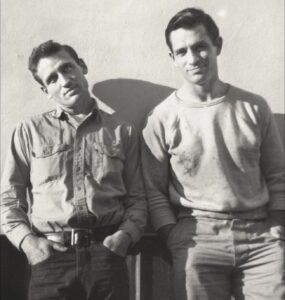 Dive into Jack Kerouac’s On the Road, a captivating journey of freedom and self-discovery. Explore the vibrant adventures of Sal Paradise as he navigates the American landscape, embodying the Beat Generation’s spirit. 🌍✨ #Literature #BeatGeneration #OnTheRoad #JackKerouac
Dive into Jack Kerouac’s On the Road, a captivating journey of freedom and self-discovery. Explore the vibrant adventures of Sal Paradise as he navigates the American landscape, embodying the Beat Generation’s spirit. 🌍✨ #Literature #BeatGeneration #OnTheRoad #JackKerouac - Exploring Ken Kesey’s One Flew Over the Cuckoo’s Nest
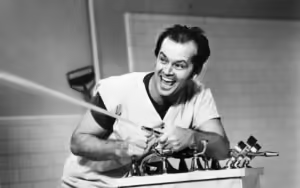 Dive into Ken Kesey’s One Flew Over the Cuckoo’s Nest—a powerful critique of institutional control and the nature of sanity. Follow McMurphy’s rebellion against Nurse Ratched’s oppressive regime. A timeless exploration of the human spirit. 📖✨ #Literature #Classics #KenKesey #OneFlewOverTheCuckoosNest
Dive into Ken Kesey’s One Flew Over the Cuckoo’s Nest—a powerful critique of institutional control and the nature of sanity. Follow McMurphy’s rebellion against Nurse Ratched’s oppressive regime. A timeless exploration of the human spirit. 📖✨ #Literature #Classics #KenKesey #OneFlewOverTheCuckoosNest - Allen Ginsberg: A Poetic Force Shaping Modern Literature
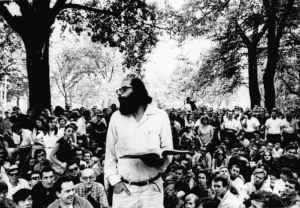 Explore the life and impact of Allen Ginsberg, a literary icon who revolutionized poetry. Dive into his influential works, activism, and the Beat Generation’s legacy. Discover how Ginsberg’s voice still resonates today. #AllenGinsberg #BeatGeneration #Poetry #LiteraryIcons
Explore the life and impact of Allen Ginsberg, a literary icon who revolutionized poetry. Dive into his influential works, activism, and the Beat Generation’s legacy. Discover how Ginsberg’s voice still resonates today. #AllenGinsberg #BeatGeneration #Poetry #LiteraryIcons - An Exploration of Count Zero (1986) by William Gibson
 Dive into William Gibson’s Count Zero (1986), a riveting cyberpunk novel that explores identity, corporate control, and the digital frontier. Follow Turner, Bobby, and Marly as their intertwined fates reveal a dystopian world shaped by technology and ambition. A must-read for sci-fi enthusiasts! #Cyberpunk #SciFi #WilliamGibson
Dive into William Gibson’s Count Zero (1986), a riveting cyberpunk novel that explores identity, corporate control, and the digital frontier. Follow Turner, Bobby, and Marly as their intertwined fates reveal a dystopian world shaped by technology and ambition. A must-read for sci-fi enthusiasts! #Cyberpunk #SciFi #WilliamGibson - Arthurian Legends: Inspiring Modern Novels
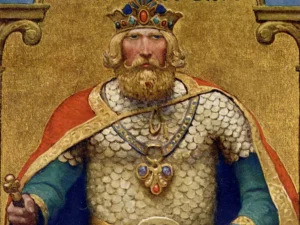 Explore the enduring legacy of King Arthur in literature! Dive into the myths, legends, and timeless stories that have captivated readers for centuries. Discover how Arthurian tales have shaped our cultural imagination and continue to inspire modern works. #KingArthur #Literature #Mythology
Explore the enduring legacy of King Arthur in literature! Dive into the myths, legends, and timeless stories that have captivated readers for centuries. Discover how Arthurian tales have shaped our cultural imagination and continue to inspire modern works. #KingArthur #Literature #Mythology - A Literary Review of The Expanse Series in order
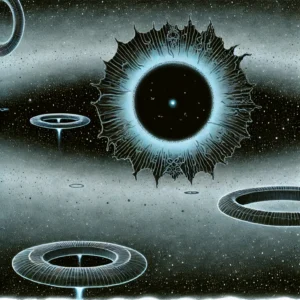 Explore the vast universe of The Expanse series by James S.A. Corey! Dive into a thrilling blend of scientific realism, political intrigue, and deep character development. Perfect for sci-fi enthusiasts! 🌌🚀 #TheExpanse #SciFi #BookRecommendations
Explore the vast universe of The Expanse series by James S.A. Corey! Dive into a thrilling blend of scientific realism, political intrigue, and deep character development. Perfect for sci-fi enthusiasts! 🌌🚀 #TheExpanse #SciFi #BookRecommendations - “The Peripheral”. An Exploration into Gibson’s Futuristic World of Intrigue
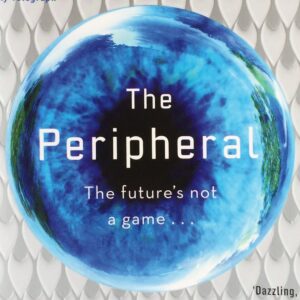 Delve into William Gibson’s futuristic labyrinth in “The Peripheral.” With intricate plotting and thought-provoking themes, it navigates the intertwining lives of Flynne Fisher and Wilf Netherton across temporal boundaries. Explore the consequences of unchecked technology and the blurred lines between reality and illusion. #ThePeripheral #WilliamGibson
Delve into William Gibson’s futuristic labyrinth in “The Peripheral.” With intricate plotting and thought-provoking themes, it navigates the intertwining lives of Flynne Fisher and Wilf Netherton across temporal boundaries. Explore the consequences of unchecked technology and the blurred lines between reality and illusion. #ThePeripheral #WilliamGibson - The Evolution of Avant-Garde Literature: A Historical Exploration
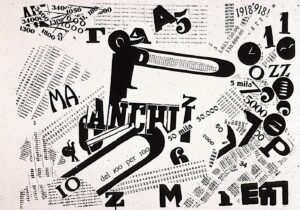 Explore the rich history of avant-garde literature, from Symbolism to digital innovations. Discover how visionary writers challenged norms, embraced experimentation, and pushed boundaries, shaping the literary landscape with their radical and transformative works. Dive into the evolution of this groundbreaking tradition! #AvantGarde #Literature #Innovation
Explore the rich history of avant-garde literature, from Symbolism to digital innovations. Discover how visionary writers challenged norms, embraced experimentation, and pushed boundaries, shaping the literary landscape with their radical and transformative works. Dive into the evolution of this groundbreaking tradition! #AvantGarde #Literature #Innovation - Beowulf: The Epic’s Enduring Legacy in Modern Literature
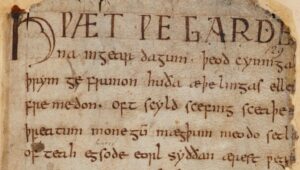 Beowulf, an ancient epic, profoundly influences modern literature. Its themes of heroism, legacy, and the battle between good and evil resonate today, inspiring works across genres. From Tolkien’s fantasy realms to superhero narratives and contemporary adaptations, Beowulf’s timeless narrative continues to shape and enrich modern storytelling.
Beowulf, an ancient epic, profoundly influences modern literature. Its themes of heroism, legacy, and the battle between good and evil resonate today, inspiring works across genres. From Tolkien’s fantasy realms to superhero narratives and contemporary adaptations, Beowulf’s timeless narrative continues to shape and enrich modern storytelling. - inferno – Dante – Communist Propaganda Style Poster Design – smp393
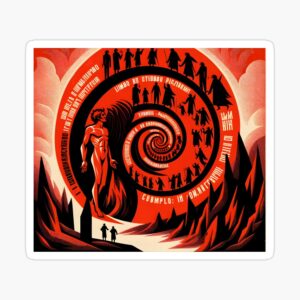 Explore Dante’s Inferno in a Communist twist! Perfect for t-shirts, posters, and more. Embrace the rebel spirit! https://www.redbubble.com/shop/ap/157576830?asc=u
Explore Dante’s Inferno in a Communist twist! Perfect for t-shirts, posters, and more. Embrace the rebel spirit! https://www.redbubble.com/shop/ap/157576830?asc=u - Grapes of Wrath – Steinbeck – Communist Propaganda Style Poster Design – smp86
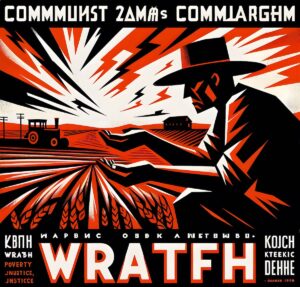 Explore the gritty depths of societal turmoil with “Grapes of Wrath” in the bold, revolutionary style of communism. https://www.redbubble.com/shop/ap/157721008?asc=u
Explore the gritty depths of societal turmoil with “Grapes of Wrath” in the bold, revolutionary style of communism. https://www.redbubble.com/shop/ap/157721008?asc=u - Canterbury Tales – Chaucer – Communist Propaganda Style Poster Design – smp186
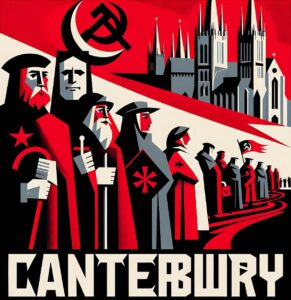 Canterbury Tales-themed artwork with a nod to communist propaganda. Ideal for t-shirts, posters, and more. https://www.redbubble.com/shop/ap/158422971?asc=u
Canterbury Tales-themed artwork with a nod to communist propaganda. Ideal for t-shirts, posters, and more. https://www.redbubble.com/shop/ap/158422971?asc=u - Alice in Wonderland – Lewis Carroll – Chinese Communist Propaganda Style Poster Design – smp190Whimsical Chinese artwork inspired by Alice’s adventures. Explore the wonderland in Chinese style. https://www.redbubble.com/shop/ap/159158364?asc=u
- The Pardoner – Chaucer – Communist Propaganda Style Poster Design – smp126
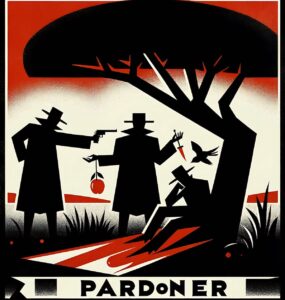 Embark on a literary journey with “Canterbury Tales” communist propaganda artwork. Looks great on t-shirts and mugs. https://www.redbubble.com/shop/ap/158045502?asc=u
Embark on a literary journey with “Canterbury Tales” communist propaganda artwork. Looks great on t-shirts and mugs. https://www.redbubble.com/shop/ap/158045502?asc=u - Call of the Wild – Jack London – Communist Propaganda Style Poster Design – smp258
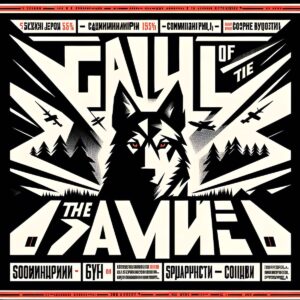 Call of the Wild – Answering the wild’s beckoning, this poster in Communist Propaganda style embodies the primal allure of Jack London’s classic adventure. https://www.redbubble.com/shop/ap/157494343?asc=u
Call of the Wild – Answering the wild’s beckoning, this poster in Communist Propaganda style embodies the primal allure of Jack London’s classic adventure. https://www.redbubble.com/shop/ap/157494343?asc=u - A Farewell to Arms – Hemingway – Communist Propaganda Style Poster Design – smp378
 We’ve imagined how Hemingway’s A farewell to Arms might have been promoted in Communist Russia, and created a Retro poster based on the look and feel of 1950’s Vintage Soviet Propaganda posters https://www.redbubble.com/shop/ap/157575829?asc=u
We’ve imagined how Hemingway’s A farewell to Arms might have been promoted in Communist Russia, and created a Retro poster based on the look and feel of 1950’s Vintage Soviet Propaganda posters https://www.redbubble.com/shop/ap/157575829?asc=u - 7 Riveting Insights into Neil Gaiman’s American Gods: Illuminating Inspirations
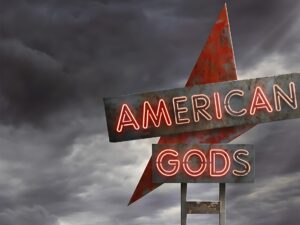 “Neil Gaiman’s ‘American Gods’ captivates with its richly imagined world, complex characters, and thought-provoking themes. With masterful prose and captivating storytelling, it delves into the clash between old and new gods, inviting readers on an unforgettable journey into the heart of American mythology.”
“Neil Gaiman’s ‘American Gods’ captivates with its richly imagined world, complex characters, and thought-provoking themes. With masterful prose and captivating storytelling, it delves into the clash between old and new gods, inviting readers on an unforgettable journey into the heart of American mythology.” - 10 Essential Horror Novels: Exploring the Dark Depths of Fear
 Explore the heart-pounding world of horror novels! From classic tales of Gothic terror to modern psychological thrillers, immerse yourself in the darkness with our curated list of must-reads. Dare to delve into the unknown and confront your deepest fears with these spine-chilling stories. #HorrorBooks #MustReads
Explore the heart-pounding world of horror novels! From classic tales of Gothic terror to modern psychological thrillers, immerse yourself in the darkness with our curated list of must-reads. Dare to delve into the unknown and confront your deepest fears with these spine-chilling stories. #HorrorBooks #MustReads - Animal Farm – orwell – Communist Propaganda Style Poster Design – smp143
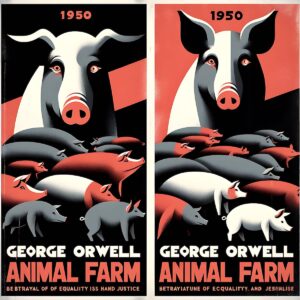 Animal Farm merged with communist propaganda, creating thought-provoking visuals for various products. https://www.redbubble.com/shop/ap/158100917?asc=u
Animal Farm merged with communist propaganda, creating thought-provoking visuals for various products. https://www.redbubble.com/shop/ap/158100917?asc=u - 11 Dark Secrets Unveiled: Unraveling J.G. Ballard’s Atrocity Exhibition
 JG Ballard’s “The Atrocity Exhibition” is a provocative novel exploring the chaos of modern society. Through fragmented narratives and surreal imagery, Ballard delves into the human psyche, media saturation, and societal decay. This groundbreaking work challenges conventional storytelling and offers a chilling reflection on contemporary life.
JG Ballard’s “The Atrocity Exhibition” is a provocative novel exploring the chaos of modern society. Through fragmented narratives and surreal imagery, Ballard delves into the human psyche, media saturation, and societal decay. This groundbreaking work challenges conventional storytelling and offers a chilling reflection on contemporary life. - Insights into Conrad’s Heart of Darkness
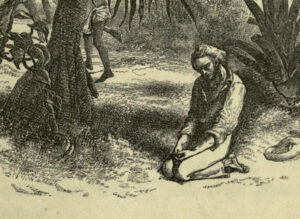 Delve into Joseph Conrad’s “Heart of Darkness,” a gripping exploration of human nature amidst colonial Africa. Follow Charles Marlow’s journey up the Congo River as he confronts the darkness within himself and society. A haunting tale of moral ambiguity and existential angst that continues to captivate readers worldwide.
Delve into Joseph Conrad’s “Heart of Darkness,” a gripping exploration of human nature amidst colonial Africa. Follow Charles Marlow’s journey up the Congo River as he confronts the darkness within himself and society. A haunting tale of moral ambiguity and existential angst that continues to captivate readers worldwide. - Ode To Autumn – Keats – Communist Propaganda Style Poster Design – smp382
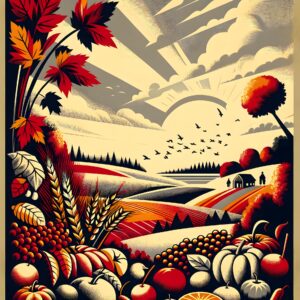 We’ve imagined how Keat’s Ode to Autumn might have been promoted in Communist Russia, and created a Retro poster based on the look and feel of 1950’s Vintage Soviet Propaganda posters https://www.redbubble.com/shop/ap/157575492?asc=u
We’ve imagined how Keat’s Ode to Autumn might have been promoted in Communist Russia, and created a Retro poster based on the look and feel of 1950’s Vintage Soviet Propaganda posters https://www.redbubble.com/shop/ap/157575492?asc=u - Kubla Khan – Samuel Taylor Coleridge – Romanticist Poster – smp313
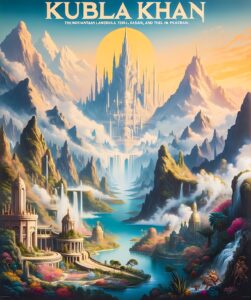 Kubla Khan portrayed in a romanticist poster style, ideal for various products like t-shirts, posters, etc. https://www.redbubble.com/shop/ap/160043887?asc=u
Kubla Khan portrayed in a romanticist poster style, ideal for various products like t-shirts, posters, etc. https://www.redbubble.com/shop/ap/160043887?asc=u - Pattern recognition – William Gibson – Alternative book Cover – smp398
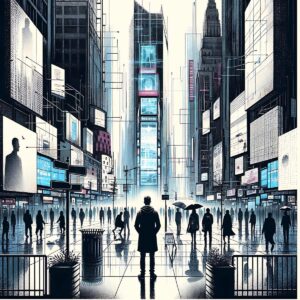 Explore the futuristic realm of “Pattern Recognition” through this captivating alternative book cover poster by William Gibson. Immerse yourself in the enigmatic narrative woven with intricate patterns and unravel the mysteries of a cyberpunk universe. Perfect for fans of sci-fi. https://www.redbubble.com/shop/ap/159974574?asc=u
Explore the futuristic realm of “Pattern Recognition” through this captivating alternative book cover poster by William Gibson. Immerse yourself in the enigmatic narrative woven with intricate patterns and unravel the mysteries of a cyberpunk universe. Perfect for fans of sci-fi. https://www.redbubble.com/shop/ap/159974574?asc=u - 7 Captivating Insights into Brecht’s The Caucasian Chalk Circle
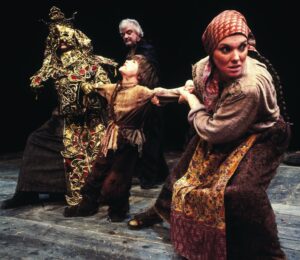 Discover Brecht’s masterpiece “The Caucasian Chalk Circle” – a compelling exploration of justice, morality, and power dynamics amidst revolution and sacrifice. An epic tale that resonates across cultures. #Theatre #Brecht
Discover Brecht’s masterpiece “The Caucasian Chalk Circle” – a compelling exploration of justice, morality, and power dynamics amidst revolution and sacrifice. An epic tale that resonates across cultures. #Theatre #Brecht - Fountains of paradise – Arthur C. Clarke – alternative book Cover – smp323
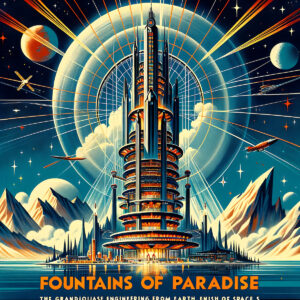 Clarke’s novel imagines a monumental space elevator, blending engineering marvels with philosophical depth. https://www.redbubble.com/shop/ap/159972826?asc=u
Clarke’s novel imagines a monumental space elevator, blending engineering marvels with philosophical depth. https://www.redbubble.com/shop/ap/159972826?asc=u - Irish Novels: Exploring the Rich Tapestry of Irish Literary Tradition
 Delve into the tapestry of Irish novels, where themes of identity, landscape, and conflict intertwine. From James Joyce’s revolutionary prose to contemporary voices like Sally Rooney, each page offers a glimpse into Ireland’s soul. Explore essential reads and discover the vibrant world of Irish literature.
Delve into the tapestry of Irish novels, where themes of identity, landscape, and conflict intertwine. From James Joyce’s revolutionary prose to contemporary voices like Sally Rooney, each page offers a glimpse into Ireland’s soul. Explore essential reads and discover the vibrant world of Irish literature. - Starship Trooper – Heinlein – Impressionist watercolour – smp318
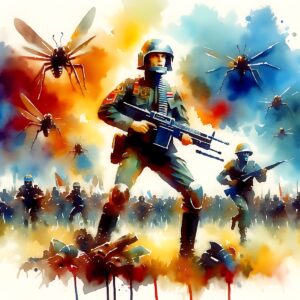 Feel the intensity of battle with an Impressionist watercolor rendition of “Starship Trooper,” inspired by the sci-fi epic’s epic conflicts. https://www.redbubble.com/shop/ap/160044372?asc=u
Feel the intensity of battle with an Impressionist watercolor rendition of “Starship Trooper,” inspired by the sci-fi epic’s epic conflicts. https://www.redbubble.com/shop/ap/160044372?asc=u - Vaclav Havel: A Luminary of Courage and Creativity in Literature and Politics
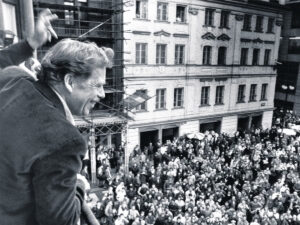 From playwright to president, Vaclav Havel’s journey is a lesson in resilience and leadership. His legacy continues to inspire change. #Leadership #Resilience #Legacy
From playwright to president, Vaclav Havel’s journey is a lesson in resilience and leadership. His legacy continues to inspire change. #Leadership #Resilience #Legacy - Night Watch: Unraveling Terry Pratchett’s Masterpiece
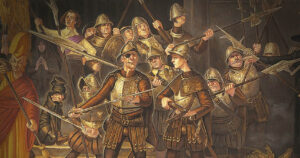 Night Watch Terry Pratchett, the acclaimed British author, is renowned for his wit, satire, and unparalleled storytelling. His unique blend of fantasy and humor has captivated readers worldwide. In “Night Watch,” Pratchett demonstrates his mastery once again, weaving a tale that is both entertaining and thought-provoking. Terry Pratchett: Master of Discworld Sir Terry Pratchett (1948–2015) …
Night Watch Terry Pratchett, the acclaimed British author, is renowned for his wit, satire, and unparalleled storytelling. His unique blend of fantasy and humor has captivated readers worldwide. In “Night Watch,” Pratchett demonstrates his mastery once again, weaving a tale that is both entertaining and thought-provoking. Terry Pratchett: Master of Discworld Sir Terry Pratchett (1948–2015) … - Smiley’s People: Unraveling Intrigue in Le Carré’s Masterpiece
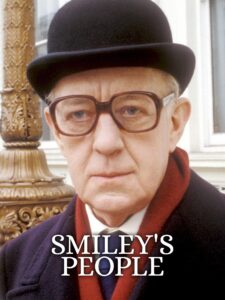 Introduction: Unveiling the Craft of John le Carré Renowned for his mastery of espionage fiction, John le Carré remains an icon in the realm of thriller literature. With a penchant for intricate plots, compelling characters, and moral ambiguity, le Carré captivates readers with his rich narratives and sharp prose. Among his notable works, “Smiley’s People” …
Introduction: Unveiling the Craft of John le Carré Renowned for his mastery of espionage fiction, John le Carré remains an icon in the realm of thriller literature. With a penchant for intricate plots, compelling characters, and moral ambiguity, le Carré captivates readers with his rich narratives and sharp prose. Among his notable works, “Smiley’s People” … - Subtext in Terry Pratchett’s Novels. The Deeper Meaning of the Discworld Novels
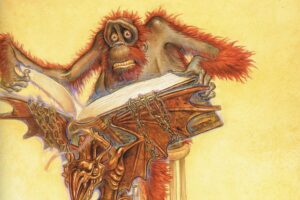 In the realm of literature, Terry Pratchett stands as a luminary, renowned for his masterful storytelling within the fantastical Discworld series. Beyond the surface narratives and witty dialogues, Pratchett’s works harbor intricate layers of subtext, weaving social commentary, philosophical ponderings, and profound insights into the human condition. This essay embarks on an exploration of the …
In the realm of literature, Terry Pratchett stands as a luminary, renowned for his masterful storytelling within the fantastical Discworld series. Beyond the surface narratives and witty dialogues, Pratchett’s works harbor intricate layers of subtext, weaving social commentary, philosophical ponderings, and profound insights into the human condition. This essay embarks on an exploration of the … - Essential Discworld Characters: 20 Key Figures in Terry Pratchett’s Universe
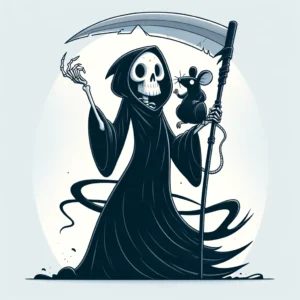 In Terry Pratchett’s beloved Discworld series, a rich tapestry of characters populates the pages, each contributing uniquely to the narrative landscape. From the hapless Rincewind to the indomitable Granny Weatherwax, these characters are more than mere players; they are the heart and soul of Discworld. In this exploration, we delve into the personalities, significance, and …
In Terry Pratchett’s beloved Discworld series, a rich tapestry of characters populates the pages, each contributing uniquely to the narrative landscape. From the hapless Rincewind to the indomitable Granny Weatherwax, these characters are more than mere players; they are the heart and soul of Discworld. In this exploration, we delve into the personalities, significance, and … - V For Vendetta: Unveiling Alan Moore’s Powerful Dystopian Masterpiece
 In the realm of graphic novels, few works have left as indelible a mark as “V for Vendetta” by Alan Moore. Explore the labyrinthine depths of Moore’s storytelling prowess as we dissect the intricate layers of plot, characters, and themes within this iconic masterpiece. Alan Moore: The Maestro of Graphic Narratives Alan Moore stands as …
In the realm of graphic novels, few works have left as indelible a mark as “V for Vendetta” by Alan Moore. Explore the labyrinthine depths of Moore’s storytelling prowess as we dissect the intricate layers of plot, characters, and themes within this iconic masterpiece. Alan Moore: The Maestro of Graphic Narratives Alan Moore stands as … - The Soft Machine: Unveiling William S. Burroughs’ Literary Realm
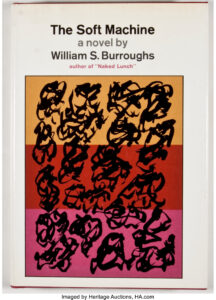 In the realm of avant-garde literature, William S. Burroughs stands as a titan, wielding words like paint on a canvas, crafting narratives that transcend traditional storytelling. His unique style, characterized by fragmentation, nonlinear structure, and exploration of taboo subjects, has left an indelible mark on the literary landscape. One of his most iconic works, “The …
In the realm of avant-garde literature, William S. Burroughs stands as a titan, wielding words like paint on a canvas, crafting narratives that transcend traditional storytelling. His unique style, characterized by fragmentation, nonlinear structure, and exploration of taboo subjects, has left an indelible mark on the literary landscape. One of his most iconic works, “The … - Men at Arms: Unveiling Terry Pratchett’s Discworld Mastery
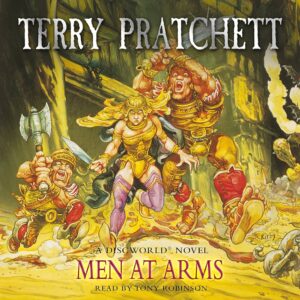 Sir Terry Pratchett, a master of wit and imagination, captivates readers with his whimsical yet profound narratives set in the fantastical realm of Discworld. Renowned for his satirical take on society, Pratchett’s works are beloved for their blend of humor, insight, and adventure. “Men at Arms,” the fifteenth installment in his Discworld series, showcases Pratchett …
Sir Terry Pratchett, a master of wit and imagination, captivates readers with his whimsical yet profound narratives set in the fantastical realm of Discworld. Renowned for his satirical take on society, Pratchett’s works are beloved for their blend of humor, insight, and adventure. “Men at Arms,” the fifteenth installment in his Discworld series, showcases Pratchett … - Watchmen: Unveiling Alan Moore’s Masterpiece
 Introduction Welcome to the intriguing world of Watchmen, a groundbreaking graphic novel by British writer Alan Moore, illustrated by artist Dave Gibbons. With its unique storytelling, complex characters, and thought-provoking themes, Watchmen stands as a cornerstone in the realm of comic books and graphic novels. A Brief Introduction to the Author and Their Style Alan …
Introduction Welcome to the intriguing world of Watchmen, a groundbreaking graphic novel by British writer Alan Moore, illustrated by artist Dave Gibbons. With its unique storytelling, complex characters, and thought-provoking themes, Watchmen stands as a cornerstone in the realm of comic books and graphic novels. A Brief Introduction to the Author and Their Style Alan … - 10 Essential George Orwell Novels: Exploring the Legacy of a Literary Giant
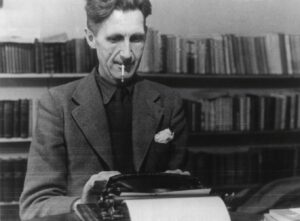 A Glimpse into the Life of George Orwell George Orwell, born Eric Arthur Blair on June 25, 1903, in Motihari, Bengal Presidency, British India, led a life as rich and diverse as the literary legacy he left behind. From his formative years in colonial India to his experiences as a writer and political activist in …
A Glimpse into the Life of George Orwell George Orwell, born Eric Arthur Blair on June 25, 1903, in Motihari, Bengal Presidency, British India, led a life as rich and diverse as the literary legacy he left behind. From his formative years in colonial India to his experiences as a writer and political activist in … - 10 Gogol Gems: Unveiling the Enigma of Nikolai Gogol’s Literary Universe
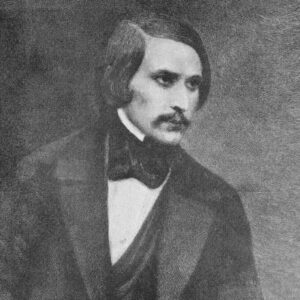 Nikolai Gogol, a titan of Russian literature, stands as a testament to the boundless depths of human imagination. Delving into his life and works unveils a captivating journey through realms both real and surreal. Let’s embark on a voyage through the enigmatic world of Gogol, exploring his autobiography, genres, key books, themes, sources of inspiration, …
Nikolai Gogol, a titan of Russian literature, stands as a testament to the boundless depths of human imagination. Delving into his life and works unveils a captivating journey through realms both real and surreal. Let’s embark on a voyage through the enigmatic world of Gogol, exploring his autobiography, genres, key books, themes, sources of inspiration, … - Ivan Denisovich: One Day’s Grit – A Glimpse into Solzhenitsyn’s World
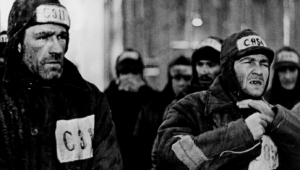 One Day in the Life of Ivan Denisovich Aleksandr Solzhenitsyn, a towering figure in Russian literature, carved his niche with a distinctive style marked by raw realism and unflinching portrayal of human resilience. “One Day in the Life of Ivan Denisovich,” serves as a poignant reflection of his narrative prowess and ideological stance. This essay …
One Day in the Life of Ivan Denisovich Aleksandr Solzhenitsyn, a towering figure in Russian literature, carved his niche with a distinctive style marked by raw realism and unflinching portrayal of human resilience. “One Day in the Life of Ivan Denisovich,” serves as a poignant reflection of his narrative prowess and ideological stance. This essay … - 20 Masterful Satirical Novels: Unraveling Society’s Absurdities
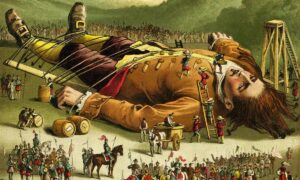 Satire, a literary genre steeped in wit and irony, serves as a powerful tool for societal critique. Originating from the Latin term satura, meaning “medley” or “mixture,” satire blends humor, sarcasm, and ridicule to expose the flaws and follies of individuals, institutions, and society at large. Through its sharp and incisive commentary, satire navigates complex …
Satire, a literary genre steeped in wit and irony, serves as a powerful tool for societal critique. Originating from the Latin term satura, meaning “medley” or “mixture,” satire blends humor, sarcasm, and ridicule to expose the flaws and follies of individuals, institutions, and society at large. Through its sharp and incisive commentary, satire navigates complex … - 1984: Orwell’s Dystopian Masterpiece
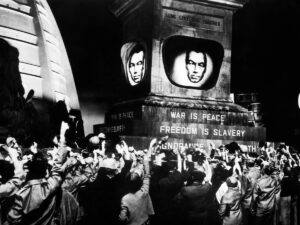 In a world rife with surveillance, propaganda, and manipulation, George Orwell’s “1984” stands as a haunting reminder of the dangers of totalitarianism and the erosion of individual freedoms. Written by George Orwell, a visionary author known for his incisive critiques of political systems, “1984” remains a timeless classic that continues to resonate with readers worldwide. …
In a world rife with surveillance, propaganda, and manipulation, George Orwell’s “1984” stands as a haunting reminder of the dangers of totalitarianism and the erosion of individual freedoms. Written by George Orwell, a visionary author known for his incisive critiques of political systems, “1984” remains a timeless classic that continues to resonate with readers worldwide. … - Solzhenitsyn: Unveiling the Resilient Spirit Through Literature
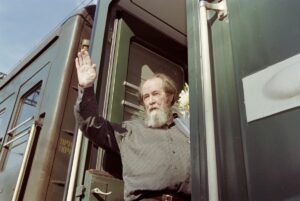 A Glimpse into the Life of Solzhenitsyn Aleksandr Solzhenitsyn, a towering figure of 20th-century literature, led a life marked by adversity, exile, and unwavering commitment to truth. Born on December 11, 1918, in Kislovodsk, Russia, Solzhenitsyn came of age during a period of profound upheaval and turmoil. The son of a Cossack father and a …
A Glimpse into the Life of Solzhenitsyn Aleksandr Solzhenitsyn, a towering figure of 20th-century literature, led a life marked by adversity, exile, and unwavering commitment to truth. Born on December 11, 1918, in Kislovodsk, Russia, Solzhenitsyn came of age during a period of profound upheaval and turmoil. The son of a Cossack father and a … - The Book of Laughter and Forgetting: Amidst Laughter, the Weight of Forgetting
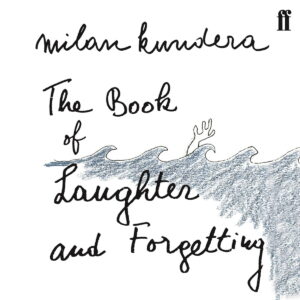 Published in 1979, “The Book of Laughter and Forgetting” is a captivating and thought-provoking novel that delves into the intricacies of human memory, laughter, and the ways in which both can be used to shape our understanding of the world. Written by the renowned Czech-French author Milan Kundera, this novel exemplifies his distinctive style, blending …
Published in 1979, “The Book of Laughter and Forgetting” is a captivating and thought-provoking novel that delves into the intricacies of human memory, laughter, and the ways in which both can be used to shape our understanding of the world. Written by the renowned Czech-French author Milan Kundera, this novel exemplifies his distinctive style, blending … - Hyperion Cantos Unveiled: A Deep Dive into Dan Simmons’ Masterpiece
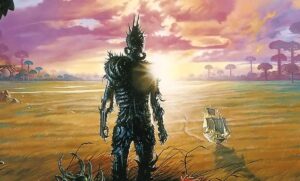 Uncover the enigmatic world of the Hyperion Cantos, where time bends, civilizations rise and fall, and destinies intertwine across the cosmos. In the vast landscape of science fiction literature, there are few series as intricate and mesmerizing as the “Hyperion Cantos.” Created by the visionary author Dan Simmons, this four-book saga takes readers on an …
Uncover the enigmatic world of the Hyperion Cantos, where time bends, civilizations rise and fall, and destinies intertwine across the cosmos. In the vast landscape of science fiction literature, there are few series as intricate and mesmerizing as the “Hyperion Cantos.” Created by the visionary author Dan Simmons, this four-book saga takes readers on an … - Mikhail Bulgakov: Master of Words in a Totalitarian World
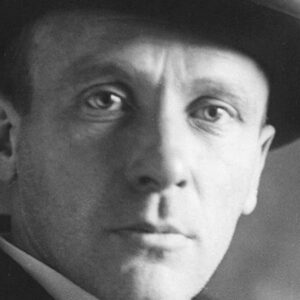 Unlocking the Magic of 20th Century Russian Literature When one delves into the captivating world of 20th-century Russian literature, few names shine as brilliantly as that of Mikhail Bulgakov. This literary virtuoso left an indelible mark on the literary landscape with his unique blend of satire, fantasy, and biting social commentary. In this extensive exploration, …
Unlocking the Magic of 20th Century Russian Literature When one delves into the captivating world of 20th-century Russian literature, few names shine as brilliantly as that of Mikhail Bulgakov. This literary virtuoso left an indelible mark on the literary landscape with his unique blend of satire, fantasy, and biting social commentary. In this extensive exploration, … - The Unforgettable Tale of Tin Drum
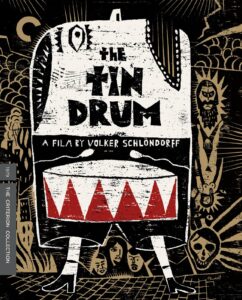 The Tin Drum In the realm of world literature, certain works stand out as timeless masterpieces that continue to captivate readers across generations. Günter Grass’s “The Tin Drum” is undeniably one such work. This chapter takes you on an immersive journey into the heart of this iconic novel, exploring its intricate plot, unforgettable characters, and …
The Tin Drum In the realm of world literature, certain works stand out as timeless masterpieces that continue to captivate readers across generations. Günter Grass’s “The Tin Drum” is undeniably one such work. This chapter takes you on an immersive journey into the heart of this iconic novel, exploring its intricate plot, unforgettable characters, and … - Being and Nothingness: Unraveling Sartre’s Existential Masterpiece
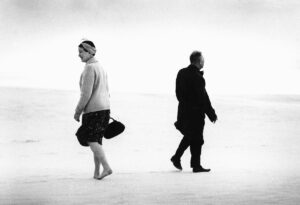 In the realm of existentialism, one work stands as an enduring monument to human introspection and philosophical inquiry: “Being and Nothingness.” Penned by the legendary French philosopher Jean-Paul Sartre, this thought-provoking novel challenges our very essence, inviting us to confront the complexities of existence. In this extensive exploration, we’ll dissect the enigmatic world of “Being …
In the realm of existentialism, one work stands as an enduring monument to human introspection and philosophical inquiry: “Being and Nothingness.” Penned by the legendary French philosopher Jean-Paul Sartre, this thought-provoking novel challenges our very essence, inviting us to confront the complexities of existence. In this extensive exploration, we’ll dissect the enigmatic world of “Being … - Divine Comedy: 700 Years of Heaven, Hell, and Purgatory
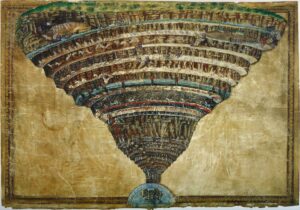 Unlocking the Epic Tale of Dante’s Divine Comedy Dante Alighieri’s “Divine Comedy” is a timeless masterpiece that has captivated readers for over 700 years. This epic narrative takes us on a journey through Heaven, Hell, and Purgatory, offering profound insights into the human condition, morality, and spirituality. In this article, we’ll delve deep into the …
Unlocking the Epic Tale of Dante’s Divine Comedy Dante Alighieri’s “Divine Comedy” is a timeless masterpiece that has captivated readers for over 700 years. This epic narrative takes us on a journey through Heaven, Hell, and Purgatory, offering profound insights into the human condition, morality, and spirituality. In this article, we’ll delve deep into the … - Defining the Modern Novel: A Literary Revolution
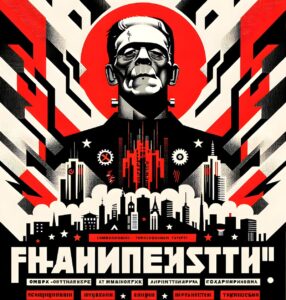 Introduction The modern novel, a cornerstone of contemporary literature, has undergone a remarkable transformation over the centuries. From its humble beginnings as a form of entertainment to its current status as a powerful medium for storytelling and social commentary, the modern novel has left an indelible mark on the literary landscape. In this comprehensive exploration, …
Introduction The modern novel, a cornerstone of contemporary literature, has undergone a remarkable transformation over the centuries. From its humble beginnings as a form of entertainment to its current status as a powerful medium for storytelling and social commentary, the modern novel has left an indelible mark on the literary landscape. In this comprehensive exploration, … - How Terry Gilliam’s “Brazil” Draws Inspiration from Kafka
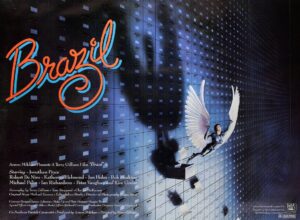 Introduction Terry Gilliam’s 1985 dystopian masterpiece, “Brazil,” stands as a striking example of cinematic artistry and social commentary. Drawing inspiration from Franz Kafka’s literary works, Gilliam crafted a surreal and nightmarish world that reflects the themes of bureaucracy, dehumanization, and the absurdity of modern life. In this in-depth analysis, we will delve into how Terry …
Introduction Terry Gilliam’s 1985 dystopian masterpiece, “Brazil,” stands as a striking example of cinematic artistry and social commentary. Drawing inspiration from Franz Kafka’s literary works, Gilliam crafted a surreal and nightmarish world that reflects the themes of bureaucracy, dehumanization, and the absurdity of modern life. In this in-depth analysis, we will delve into how Terry … - The Trial: 3 Key Themes That Define Kafka’s Masterpiece
 Unlocking the Mysteries of Franz Kafka’s The Trial Franz Kafka‘s The Trial stands as a monument of literary genius, a haunting exploration of the absurdity of bureaucracy and the unsettling nature of human existence. In this extensive dive into Kafka’s enigmatic masterpiece, we’ll delve into the plot, key characters, themes, inspiration, reviews, cultural impact, similar …
Unlocking the Mysteries of Franz Kafka’s The Trial Franz Kafka‘s The Trial stands as a monument of literary genius, a haunting exploration of the absurdity of bureaucracy and the unsettling nature of human existence. In this extensive dive into Kafka’s enigmatic masterpiece, we’ll delve into the plot, key characters, themes, inspiration, reviews, cultural impact, similar … - The Dreadful World of “Call of Cthulhu”: Witness the Birth of a Cosmic Horror
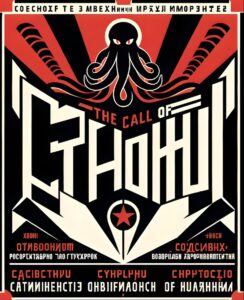 Unleash the Eldritch Terror – A Dive into H.P. Lovecraft’s Masterpiece Are you ready to step into the realm of cosmic horror and unravel the mysteries of the ancient ones? In this article, we embark on a journey into the enigmatic world of H.P. Lovecraft’s “Call of Cthulhu.” Get ready to face eldritch horrors, encounter …
Unleash the Eldritch Terror – A Dive into H.P. Lovecraft’s Masterpiece Are you ready to step into the realm of cosmic horror and unravel the mysteries of the ancient ones? In this article, we embark on a journey into the enigmatic world of H.P. Lovecraft’s “Call of Cthulhu.” Get ready to face eldritch horrors, encounter … - Trainspotting: A Gritty Tale of Addiction and Survival
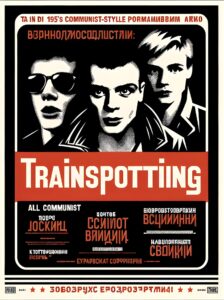 In the underbelly of Edinburgh’s dark and gritty streets, where despair and addiction grip the lives of its inhabitants, a novel emerged in 1993 that would shock, captivate, and leave an indelible mark on literature and popular culture. “Trainspotting” by Irvine Welsh, a provocative and unflinching portrayal of addiction, poverty, and survival, has been a …
In the underbelly of Edinburgh’s dark and gritty streets, where despair and addiction grip the lives of its inhabitants, a novel emerged in 1993 that would shock, captivate, and leave an indelible mark on literature and popular culture. “Trainspotting” by Irvine Welsh, a provocative and unflinching portrayal of addiction, poverty, and survival, has been a … - Exploring 20th Century Modern German Novels: A Literary Journey
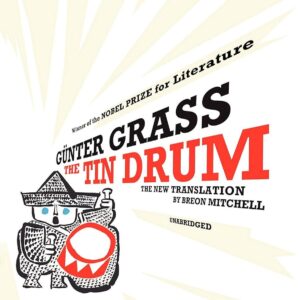 Unlocking the Rich Tapestry of Modern German Literature The 20th century was a period of profound transformation and upheaval in Germany, and its literature reflected this tumultuous era. Modern German novels from this century are a fascinating exploration of human experiences, cultural shifts, and political landscapes. In this comprehensive exploration, we delve into the defining …
Unlocking the Rich Tapestry of Modern German Literature The 20th century was a period of profound transformation and upheaval in Germany, and its literature reflected this tumultuous era. Modern German novels from this century are a fascinating exploration of human experiences, cultural shifts, and political landscapes. In this comprehensive exploration, we delve into the defining … - The Existential Odyssey of Jean-Paul Sartre: A Deep Dive into the Philosopher’s Life and Work
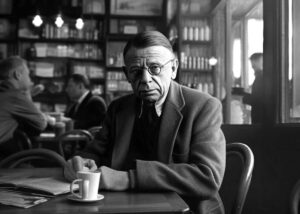 Unlocking the Mind of a Renowned Existentialist Jean-Paul Sartre, the iconic figure in existentialist philosophy, leaves an indelible mark on the world of literature and thought. From his groundbreaking books to the profound themes that echo through his work, Sartre’s impact continues to reverberate through the corridors of philosophy and literature. This article embarks on …
Unlocking the Mind of a Renowned Existentialist Jean-Paul Sartre, the iconic figure in existentialist philosophy, leaves an indelible mark on the world of literature and thought. From his groundbreaking books to the profound themes that echo through his work, Sartre’s impact continues to reverberate through the corridors of philosophy and literature. This article embarks on … - Unveiling Tolkien’s Enchanted World: “The Hobbit” and Its Enduring Magic
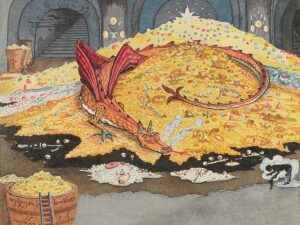 In the realm of timeless literary classics, there exists a magical tale that has captivated readers for generations. It’s a journey through a mythical world filled with adventure, courage, and unexpected friendships. This tale is none other than J.R.R. Tolkien’s “The Hobbit.” In this article, we will delve deep into the heart of this beloved …
In the realm of timeless literary classics, there exists a magical tale that has captivated readers for generations. It’s a journey through a mythical world filled with adventure, courage, and unexpected friendships. This tale is none other than J.R.R. Tolkien’s “The Hobbit.” In this article, we will delve deep into the heart of this beloved … - Unraveling the Enigma: 5 Pioneering Absurdist Humour Novels
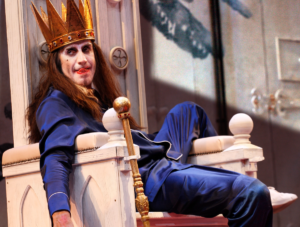 In the vast and diverse landscape of literary genres, few are as enigmatic and thought-provoking as absurdist humor. It’s a genre that defies convention, challenges reality, and tickles the funny bone in unexpected ways. Join us on a whimsical journey as we delve into the world of absurdist humor novels, exploring their defining characteristics, tracing …
In the vast and diverse landscape of literary genres, few are as enigmatic and thought-provoking as absurdist humor. It’s a genre that defies convention, challenges reality, and tickles the funny bone in unexpected ways. Join us on a whimsical journey as we delve into the world of absurdist humor novels, exploring their defining characteristics, tracing … - Unraveling the Enigmatic World of Ringworld: A 1,000,000 year old Science Fiction Epic
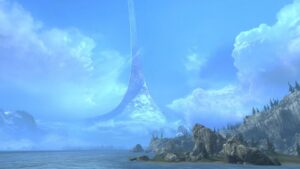 Discover the captivating universe of Larry Niven’s Ringworld, a literary masterpiece that redefined science fiction. Explore its intricate plot, unforgettable characters, thought-provoking themes, and its enduring impact on the genre. Larry Niven’s “Ringworld” is a seminal work of science fiction that continues to captivate readers with its inventive world-building, complex characters, and visionary storytelling. This …
Discover the captivating universe of Larry Niven’s Ringworld, a literary masterpiece that redefined science fiction. Explore its intricate plot, unforgettable characters, thought-provoking themes, and its enduring impact on the genre. Larry Niven’s “Ringworld” is a seminal work of science fiction that continues to captivate readers with its inventive world-building, complex characters, and visionary storytelling. This … - Unveiling the Secrets of Slough House: Espionage, Intrigue, and the Underbelly of Intelligence Agencies in 8 Novels
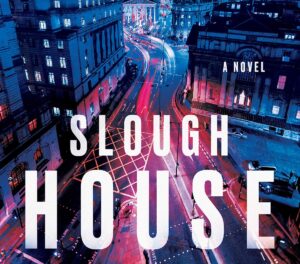 Unlock the world of espionage, deceit, and morally ambiguous characters in the gripping Slough House series by Mick Herron. Dive into the intricacies of this literary gem, exploring its plot, key characters, themes, and cultural impact. Discover what inspired the author and find similar books to satiate your craving for thrilling spy narratives. Are you …
Unlock the world of espionage, deceit, and morally ambiguous characters in the gripping Slough House series by Mick Herron. Dive into the intricacies of this literary gem, exploring its plot, key characters, themes, and cultural impact. Discover what inspired the author and find similar books to satiate your craving for thrilling spy narratives. Are you … - Exploring Kurt Vonnegut’s “Breakfast of Champions”
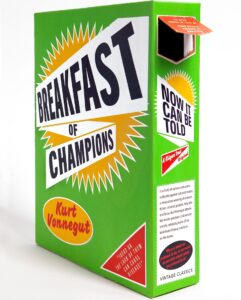 Discover the bizarre and thought-provoking world of Kurt Vonnegut’s “Breakfast of Champions.” Unravel the plot, meet the key characters, and delve into the key themes that make this novel a true masterpiece of American literature. Kurt Vonnegut‘s “Breakfast of Champions” is a literary masterpiece that defies easy categorization. Published in 1973, this satirical and absurd …
Discover the bizarre and thought-provoking world of Kurt Vonnegut’s “Breakfast of Champions.” Unravel the plot, meet the key characters, and delve into the key themes that make this novel a true masterpiece of American literature. Kurt Vonnegut‘s “Breakfast of Champions” is a literary masterpiece that defies easy categorization. Published in 1973, this satirical and absurd … - Exploring “Junky” by William S. Burroughs: A Deep Dive into Addiction, Drugs, and Descent
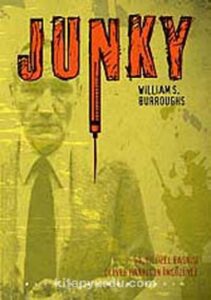 William S. Burroughs’ “Junky” is a haunting exploration of addiction, a novel that delves deep into the murky underworld of drug abuse. Published in 1953, it stands as a powerful testament to the author’s own struggles with addiction and his unflinching portrayal of the harrowing experiences that come with it. In this extensive article, we’ll …
William S. Burroughs’ “Junky” is a haunting exploration of addiction, a novel that delves deep into the murky underworld of drug abuse. Published in 1953, it stands as a powerful testament to the author’s own struggles with addiction and his unflinching portrayal of the harrowing experiences that come with it. In this extensive article, we’ll … - Exploring “The Ticket That Exploded”: A William S. Burroughs Masterpiece
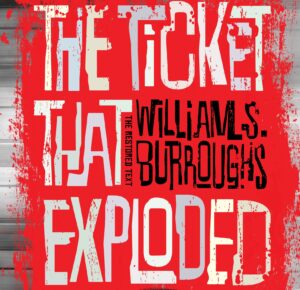 Introduction If you’re a fan of mind-bending literature that challenges the boundaries of narrative, then William S. Burroughs‘ “The Ticket That Exploded” is a novel you won’t want to miss. This groundbreaking work, published in 1962, takes readers on a wild and surreal journey through a dystopian world where reality is as fluid as the …
Introduction If you’re a fan of mind-bending literature that challenges the boundaries of narrative, then William S. Burroughs‘ “The Ticket That Exploded” is a novel you won’t want to miss. This groundbreaking work, published in 1962, takes readers on a wild and surreal journey through a dystopian world where reality is as fluid as the … - Unfinished Tales: J.R.R. Tolkien’s Enigmatic Literary Gem
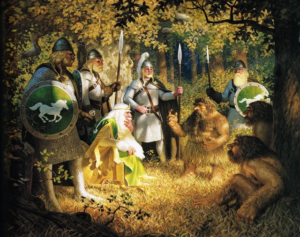 J.R.R. Tolkien‘s literary legacy is primarily associated with “The Lord of the Rings” and “The Hobbit,” but his vast imagination extends far beyond these well-known works. “Unfinished Tales” is a hidden gem in Tolkien’s bibliography, offering readers a unique and tantalizing glimpse into Middle-earth’s lore. In this exploration, we will delve into the intricate plot, …
J.R.R. Tolkien‘s literary legacy is primarily associated with “The Lord of the Rings” and “The Hobbit,” but his vast imagination extends far beyond these well-known works. “Unfinished Tales” is a hidden gem in Tolkien’s bibliography, offering readers a unique and tantalizing glimpse into Middle-earth’s lore. In this exploration, we will delve into the intricate plot, … - Unraveling the Thrills: The Jack Reacher Series
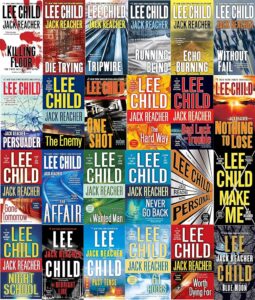 If you’re a fan of heart-pounding action, intricate plots, and a rugged hero who never backs down, then the Jack Reacher series is your literary playground. Created by the prolific author Lee Child, this series has been captivating readers around the world for over two decades. In this in-depth exploration, we’ll dive into the heart …
If you’re a fan of heart-pounding action, intricate plots, and a rugged hero who never backs down, then the Jack Reacher series is your literary playground. Created by the prolific author Lee Child, this series has been captivating readers around the world for over two decades. In this in-depth exploration, we’ll dive into the heart … - Lee Child: The Thrilling World of Jack Reacher
 In this in-depth exploration of Lee Child’s literary legacy, we delve into the thrilling world of Jack Reacher, uncover key books, themes, and the cultural impact of this iconic author. Lee Child, a name synonymous with adrenaline-pumping suspense and relentless action, has carved a niche for himself in the world of thriller literature. With a …
In this in-depth exploration of Lee Child’s literary legacy, we delve into the thrilling world of Jack Reacher, uncover key books, themes, and the cultural impact of this iconic author. Lee Child, a name synonymous with adrenaline-pumping suspense and relentless action, has carved a niche for himself in the world of thriller literature. With a … - Exploring the Enchanting World of “The Sandman”: A 10 volume Masterpiece of Graphic Literature
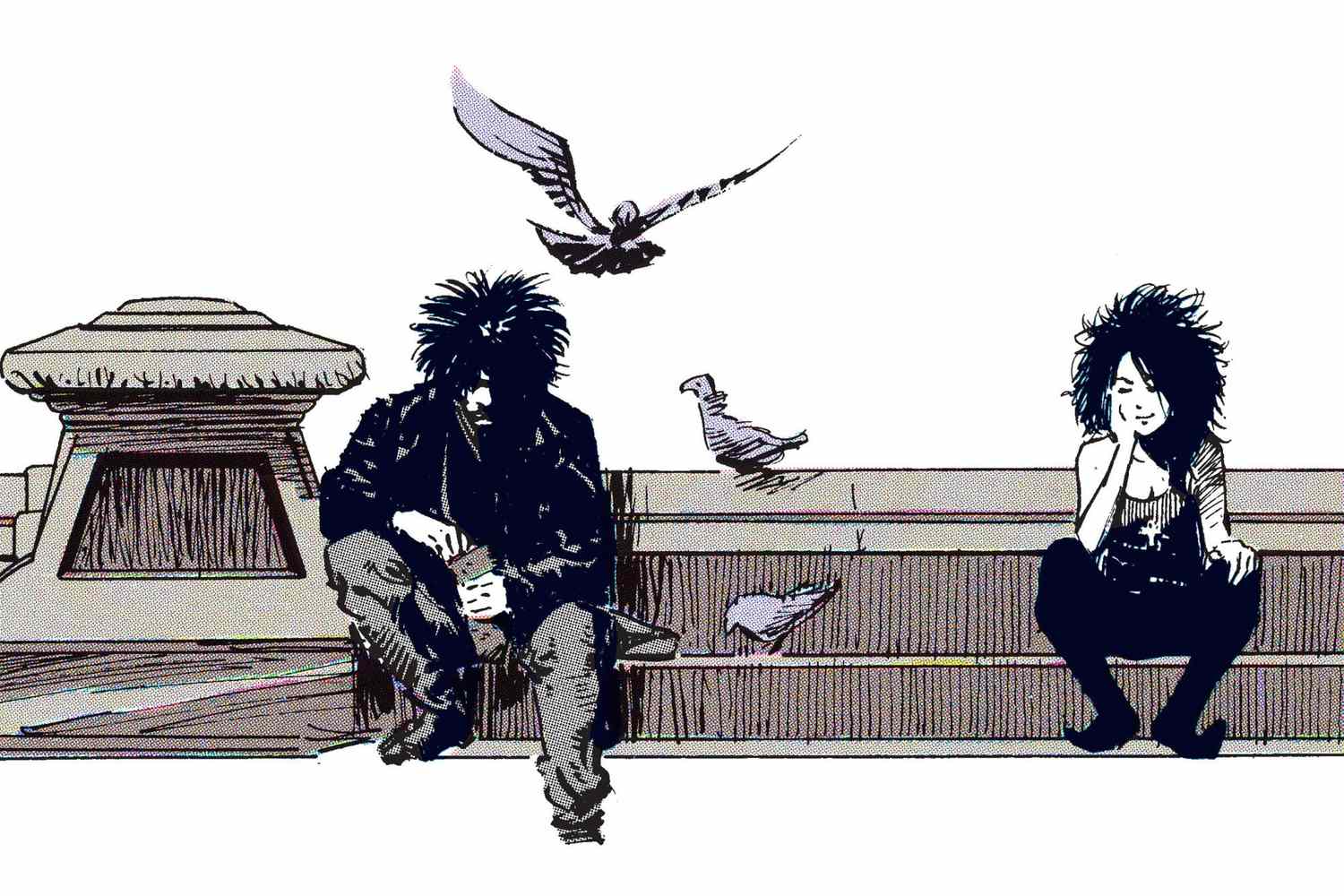 In the realm of graphic novels, few works have attained the legendary status and enduring acclaim of Neil Gaiman‘s “The Sandman.” With its rich storytelling, complex characters, and thought-provoking themes, this literary masterpiece has left an indelible mark on the world of comics and literature as a whole. In this deep dive, we will journey …
In the realm of graphic novels, few works have attained the legendary status and enduring acclaim of Neil Gaiman‘s “The Sandman.” With its rich storytelling, complex characters, and thought-provoking themes, this literary masterpiece has left an indelible mark on the world of comics and literature as a whole. In this deep dive, we will journey … - Mona Lisa Overdrive – Conclusion of the Sprawl Trilogy
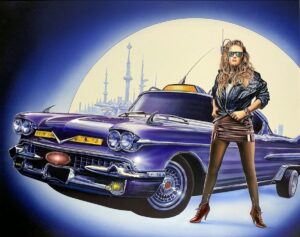 In the neon-lit alleys of the literary world, there exists a timeless masterpiece that continues to captivate readers with its gripping narrative and prophetic vision of a future ruled by technology and corporate greed. “Mona Lisa Overdrive” (1988), penned by the legendary science fiction author William Gibson, is a work of art that has left …
In the neon-lit alleys of the literary world, there exists a timeless masterpiece that continues to captivate readers with its gripping narrative and prophetic vision of a future ruled by technology and corporate greed. “Mona Lisa Overdrive” (1988), penned by the legendary science fiction author William Gibson, is a work of art that has left … - Unraveling the Enigma: The three-Body Problem Novel
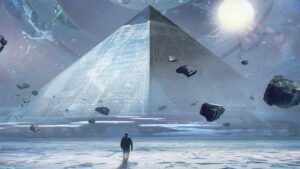 Unlock the secrets of Liu Cixin’s masterpiece, exploring its plot, key characters, themes, inspiration, reviews, cultural impact, similar books, and more. When it comes to groundbreaking science fiction, few works have left as indelible a mark as Liu Cixin’s “The Three-Body Problem.” This celebrated novel has captivated readers worldwide with its mind-bending plot, complex characters, …
Unlock the secrets of Liu Cixin’s masterpiece, exploring its plot, key characters, themes, inspiration, reviews, cultural impact, similar books, and more. When it comes to groundbreaking science fiction, few works have left as indelible a mark as Liu Cixin’s “The Three-Body Problem.” This celebrated novel has captivated readers worldwide with its mind-bending plot, complex characters, … - Exploring “Consider Phlebas”: A Space Odyssey Beyond Imagination
 In a universe where civilizations rise and fall like cosmic tides, “Consider Phlebas” emerges as a brilliant star. Join us on a journey through the vast expanse of Iain M. Banks’ mind as we delve into the heart of this science fiction masterpiece. Introduction Iain M. Banks’ “Consider Phlebas” is a science fiction masterpiece that …
In a universe where civilizations rise and fall like cosmic tides, “Consider Phlebas” emerges as a brilliant star. Join us on a journey through the vast expanse of Iain M. Banks’ mind as we delve into the heart of this science fiction masterpiece. Introduction Iain M. Banks’ “Consider Phlebas” is a science fiction masterpiece that … - The Cosmic Odyssey of Liu Cixin: A Journey Through Science Fiction Realms
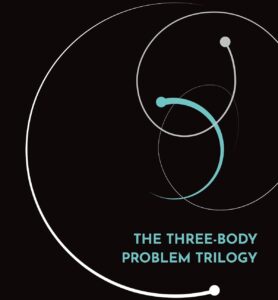 Unlocking the Universe through the Eyes of China’s Sci-Fi Maestro In the boundless cosmos of science fiction literature, few names shine as brightly as Liu Cixin’s. With his visionary storytelling, Liu has catapulted Chinese science fiction onto the global stage. From his awe-inspiring narratives to his cultural impact, Liu Cixin has become a luminary in …
Unlocking the Universe through the Eyes of China’s Sci-Fi Maestro In the boundless cosmos of science fiction literature, few names shine as brightly as Liu Cixin’s. With his visionary storytelling, Liu has catapulted Chinese science fiction onto the global stage. From his awe-inspiring narratives to his cultural impact, Liu Cixin has become a luminary in … - Exploring “Old Man’s War”: Life begins at 75!
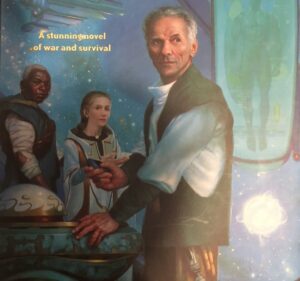 In the vast universe of science fiction literature, there are few novels that have left as indelible a mark as John Scalzi‘s “Old Man’s War.” This gripping space opera, first published in 2005, has captured the hearts and minds of readers worldwide with its unique blend of action, humor, and profound exploration of the human …
In the vast universe of science fiction literature, there are few novels that have left as indelible a mark as John Scalzi‘s “Old Man’s War.” This gripping space opera, first published in 2005, has captured the hearts and minds of readers worldwide with its unique blend of action, humor, and profound exploration of the human … - Unraveling Albert Camus’ “The Plague”: A Tale of Existential Crisis
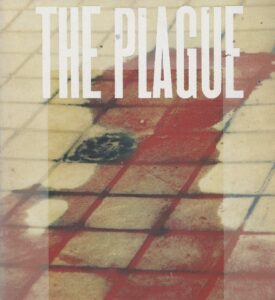 In the shadowed corners of a quiet Algerian town, a tale unfolds – a tale not just of sickness and death, but of the very essence of human existence. Welcome to the world of Albert Camus‘ “The Plague,” where the mundane and the profound converge in a gripping narrative that has left an indelible mark …
In the shadowed corners of a quiet Algerian town, a tale unfolds – a tale not just of sickness and death, but of the very essence of human existence. Welcome to the world of Albert Camus‘ “The Plague,” where the mundane and the profound converge in a gripping narrative that has left an indelible mark … - The Wind from Nowhere: J.G. Ballard’s 550 MPH Apocalyptic Masterpiece
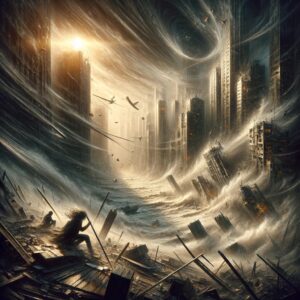 Unveiling the Dystopian World of J.G. Ballard In the realm of science fiction, certain authors stand out as visionary pioneers, creators of worlds that challenge our perceptions of reality and humanity. One such luminary is J.G. Ballard, a writer known for his exploration of the human psyche under the influence of extreme environments. Among his …
Unveiling the Dystopian World of J.G. Ballard In the realm of science fiction, certain authors stand out as visionary pioneers, creators of worlds that challenge our perceptions of reality and humanity. One such luminary is J.G. Ballard, a writer known for his exploration of the human psyche under the influence of extreme environments. Among his … - Unveiling the Intrigue: Spook Country (2007) – A Literary Masterpiece
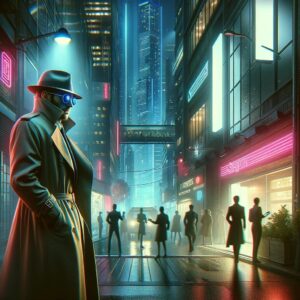 In the realm of contemporary literature, few authors can rival the enigmatic and visionary storytelling of William Gibson. “Spook Country” (2007) stands as a testament to Gibson’s narrative prowess, offering readers a mesmerizing journey through a world where technology and espionage intertwine. In this article, we embark on an in-depth exploration of “Spook Country,” dissecting …
In the realm of contemporary literature, few authors can rival the enigmatic and visionary storytelling of William Gibson. “Spook Country” (2007) stands as a testament to Gibson’s narrative prowess, offering readers a mesmerizing journey through a world where technology and espionage intertwine. In this article, we embark on an in-depth exploration of “Spook Country,” dissecting … - Exploring the Enigmatic World of Franz Kafka: 5 Key Aspects of His Literary Legacy
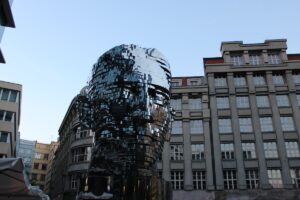 Unlocking the Genius of Franz Kafka: From Metamorphosis to Cultural Revolution Franz Kafka, a name synonymous with the surreal and the absurd, is one of the most enigmatic figures in the world of literature. Born in Prague in 1883, Kafka’s unique style and thought-provoking themes have left an indelible mark on the literary landscape. In …
Unlocking the Genius of Franz Kafka: From Metamorphosis to Cultural Revolution Franz Kafka, a name synonymous with the surreal and the absurd, is one of the most enigmatic figures in the world of literature. Born in Prague in 1883, Kafka’s unique style and thought-provoking themes have left an indelible mark on the literary landscape. In … - Good Omens. Unraveling the Magic with 5 Key Elements of Good Omens
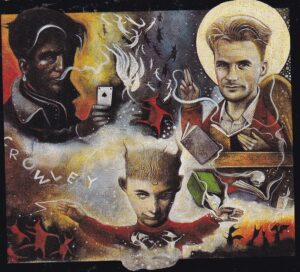 In the realm of modern fantasy literature, there are tales that stand out as timeless classics, capturing the imaginations of readers across generations. “Good Omens,” a collaborative masterpiece penned by Neil Gaiman and Terry Pratchett, is undoubtedly one such gem. This article embarks on an exhilarating journey through the intricacies of this remarkable book, encompassing …
In the realm of modern fantasy literature, there are tales that stand out as timeless classics, capturing the imaginations of readers across generations. “Good Omens,” a collaborative masterpiece penned by Neil Gaiman and Terry Pratchett, is undoubtedly one such gem. This article embarks on an exhilarating journey through the intricacies of this remarkable book, encompassing … - Unmasking Espionage: The Intriguing World of George Smiley Novels
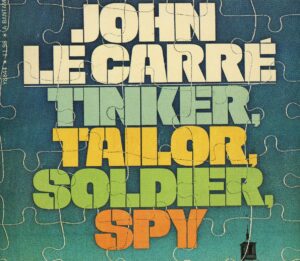 Discover the captivating universe of espionage fiction through the eyes of George Smiley, a legendary British spymaster. Delve into the history, evolution, and notable authors of this genre. Espionage fiction, a thrilling and enigmatic genre, has taken readers on covert missions, unraveling international mysteries for decades. At the heart of this genre lies George Smiley, …
Discover the captivating universe of espionage fiction through the eyes of George Smiley, a legendary British spymaster. Delve into the history, evolution, and notable authors of this genre. Espionage fiction, a thrilling and enigmatic genre, has taken readers on covert missions, unraveling international mysteries for decades. At the heart of this genre lies George Smiley, … - The Complete List of Discworld Books in Order: A Journey Through Terry Pratchett’s Magical Universe
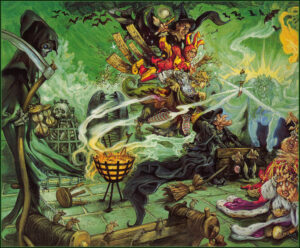 Unlock the doors to the enchanting world of Discworld with this comprehensive list of Terry Pratchett’s beloved novels, meticulously organized in reading order. If you’re a fan of fantasy literature, then you’ve probably heard of Discworld—a vast, whimsical, and utterly unique universe created by the late, great Sir Terry Pratchett. Over the course of several …
Unlock the doors to the enchanting world of Discworld with this comprehensive list of Terry Pratchett’s beloved novels, meticulously organized in reading order. If you’re a fan of fantasy literature, then you’ve probably heard of Discworld—a vast, whimsical, and utterly unique universe created by the late, great Sir Terry Pratchett. Over the course of several … - Unveiling the Enigma of “Supercannes”: A Deep Dive into J.G. Ballard’s 2000 Masterpiece
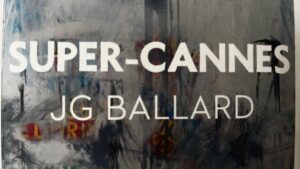 Discover the Intriguing World of “Supercannes” J.G. Ballard’s “Supercannes” stands as a compelling testament to the author’s genius. This novel, first published in 2000, takes readers on a mesmerizing journey through the dystopian landscape of a high-tech corporate utopia. With its intricate plot, memorable characters, and thought-provoking themes, “Supercannes” has left an indelible mark on …
Discover the Intriguing World of “Supercannes” J.G. Ballard’s “Supercannes” stands as a compelling testament to the author’s genius. This novel, first published in 2000, takes readers on a mesmerizing journey through the dystopian landscape of a high-tech corporate utopia. With its intricate plot, memorable characters, and thought-provoking themes, “Supercannes” has left an indelible mark on … - Unveiling Alan Moore: The Literary Wizard of Comics in 5 Essential Publications
 Alan Moore: a name that resonates with comic book aficionados, literary connoisseurs, and pop culture enthusiasts alike. This visionary writer has transcended the boundaries of conventional storytelling, weaving intricate narratives that challenge our perceptions of the medium. In this in-depth exploration, we delve into the multifaceted world of Alan Moore, from the diverse genres he’s …
Alan Moore: a name that resonates with comic book aficionados, literary connoisseurs, and pop culture enthusiasts alike. This visionary writer has transcended the boundaries of conventional storytelling, weaving intricate narratives that challenge our perceptions of the medium. In this in-depth exploration, we delve into the multifaceted world of Alan Moore, from the diverse genres he’s … - Unraveling the Epic Tale: Baroque Cycle – A Literary Odyssey Through Time and Ideas
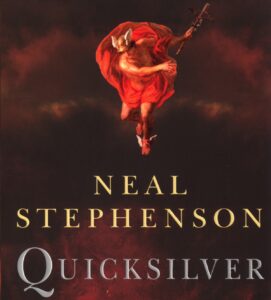 Unlock the mysteries of Neal Stephenson’s monumental work, the Baroque Cycle, as we delve into its intricate plot, meet its captivating characters, explore its key themes, and discover the sources of inspiration that brought this literary masterpiece to life. 1. Introduction: The Baroque Cycle – A Literary Marvel In the realm of historical fiction, few …
Unlock the mysteries of Neal Stephenson’s monumental work, the Baroque Cycle, as we delve into its intricate plot, meet its captivating characters, explore its key themes, and discover the sources of inspiration that brought this literary masterpiece to life. 1. Introduction: The Baroque Cycle – A Literary Marvel In the realm of historical fiction, few … - Unveiling the Magical World of J.R.R. Tolkien: 3 Books From Beyond Middle-earth
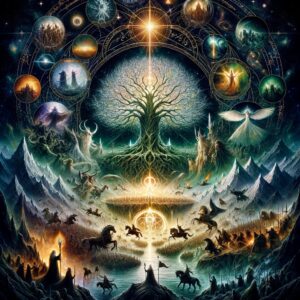 Explore the Enchanting Tales, Characters, and Themes of Tolkien’s Lesser-Known Works Discover the hidden treasures of J.R.R. Tolkien’s literary legacy beyond Middle-earth. Dive into the captivating worlds, characters, and themes that shaped his lesser-known works, unraveling the inspirations behind these gems, and exploring their impact on literature and culture. J.R.R. Tolkien is celebrated worldwide for …
Explore the Enchanting Tales, Characters, and Themes of Tolkien’s Lesser-Known Works Discover the hidden treasures of J.R.R. Tolkien’s literary legacy beyond Middle-earth. Dive into the captivating worlds, characters, and themes that shaped his lesser-known works, unraveling the inspirations behind these gems, and exploring their impact on literature and culture. J.R.R. Tolkien is celebrated worldwide for … - Unraveling the Enigma: “The Wasp Factory” – A Dark and Bizarre Masterpiece
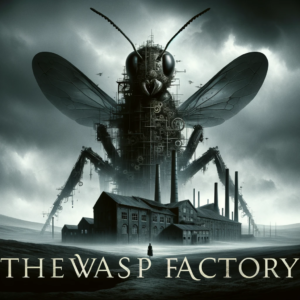 In the world of contemporary literature, there are few books as enigmatic, disturbing, and thought-provoking as “The Wasp Factory” by Iain Banks. This cult classic has left readers baffled, intrigued, and haunted since its release in 1984. In this extensive exploration, we will delve deep into the twisted world of “The Wasp Factory,” dissecting its …
In the world of contemporary literature, there are few books as enigmatic, disturbing, and thought-provoking as “The Wasp Factory” by Iain Banks. This cult classic has left readers baffled, intrigued, and haunted since its release in 1984. In this extensive exploration, we will delve deep into the twisted world of “The Wasp Factory,” dissecting its … - Arthur C. Clarke: The Visionary Pioneer of Science Fiction
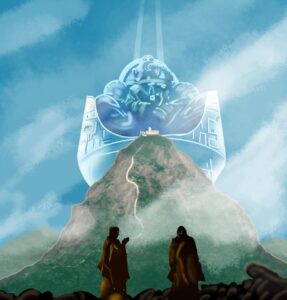 In the vast cosmos of science fiction literature, there exists a celestial body of work that continues to shine with unparalleled brilliance. At the heart of this luminous constellation is the name Arthur C. Clarke – a luminary whose imaginative prowess and scientific acumen have left an indelible mark on the genre. With a career …
In the vast cosmos of science fiction literature, there exists a celestial body of work that continues to shine with unparalleled brilliance. At the heart of this luminous constellation is the name Arthur C. Clarke – a luminary whose imaginative prowess and scientific acumen have left an indelible mark on the genre. With a career … - The Cyberpunk Pioneer: Exploring William Gibson’s Impactful Literary Legacy
 Explore William Gibson’s cyberpunk universe and his profound impact on literature.#novels #books #bookstagram #novel #literature #bookaddict #bookworm #fiction #reading https://literaturelegends.com/william-gibson/
Explore William Gibson’s cyberpunk universe and his profound impact on literature.#novels #books #bookstagram #novel #literature #bookaddict #bookworm #fiction #reading https://literaturelegends.com/william-gibson/ - Unraveling “Chocky”: A Sci-Fi Masterpiece by John Wyndham
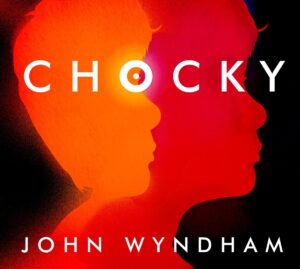 If you’re a fan of thought-provoking science fiction that delves into the complexities of human nature and the unknown, then “Chocky” by John Wyndham is a must-read. This timeless novel has captured the imaginations of readers for decades, offering a unique blend of suspense, intrigue, and philosophical exploration. In this article, we’ll take a deep …
If you’re a fan of thought-provoking science fiction that delves into the complexities of human nature and the unknown, then “Chocky” by John Wyndham is a must-read. This timeless novel has captured the imaginations of readers for decades, offering a unique blend of suspense, intrigue, and philosophical exploration. In this article, we’ll take a deep … - Exploring the Countercultural Odyssey of William Burroughs in 4 Essential Books
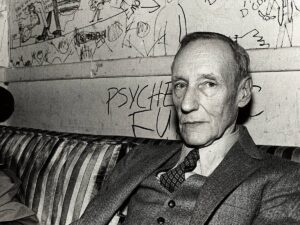 Unlocking the Enigmatic World of the Beat Generation Icon In the hazy realm of Beat Generation literature, one name stands out as a symbol of rebellion, experimentation, and unfiltered artistic expression: William S. Burroughs. An iconoclastic writer, a pioneer of avant-garde literature, and a countercultural luminary, Burroughs’ life and work continue to captivate and challenge …
Unlocking the Enigmatic World of the Beat Generation Icon In the hazy realm of Beat Generation literature, one name stands out as a symbol of rebellion, experimentation, and unfiltered artistic expression: William S. Burroughs. An iconoclastic writer, a pioneer of avant-garde literature, and a countercultural luminary, Burroughs’ life and work continue to captivate and challenge … - Exploring the Evolving World of Speculative Fiction
 Speculative fiction fans, embark on a journey through evolving worlds and limitless possibilities.#novels #books #bookstagram #novel #literature #bookaddict #bookworm #fiction #reading
Speculative fiction fans, embark on a journey through evolving worlds and limitless possibilities.#novels #books #bookstagram #novel #literature #bookaddict #bookworm #fiction #reading - Exploring the Visionary World of J.G. Ballard: Master of Dystopian Dreams
 Unraveling the Mind of a Literary Maverick In the vast realm of speculative fiction, few names shine as brightly as that of J.G. Ballard. This prolific British author stands as a luminary in the science fiction genre, known for his unflinching exploration of the human psyche, obsession with technology, and unique narrative style. Join us …
Unraveling the Mind of a Literary Maverick In the vast realm of speculative fiction, few names shine as brightly as that of J.G. Ballard. This prolific British author stands as a luminary in the science fiction genre, known for his unflinching exploration of the human psyche, obsession with technology, and unique narrative style. Join us … - The Diamond Age: A Futuristic Tale of Technology, Society, and Education
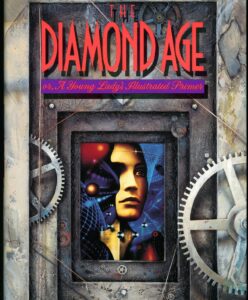 In Neal Stephenson’s “The Diamond Age,” a world of nanotechnology, artificial intelligence, and societal divisions collide, resulting in a thrilling narrative that explores the power of education, the impact of technology, and the quest for self-identity. Introduction In the ever-evolving landscape of science fiction literature, few works stand out as boldly as Neal Stephenson’s “The …
In Neal Stephenson’s “The Diamond Age,” a world of nanotechnology, artificial intelligence, and societal divisions collide, resulting in a thrilling narrative that explores the power of education, the impact of technology, and the quest for self-identity. Introduction In the ever-evolving landscape of science fiction literature, few works stand out as boldly as Neal Stephenson’s “The … - Exploring “Player of Games”: A Masterpiece of Sci-Fi Brilliance
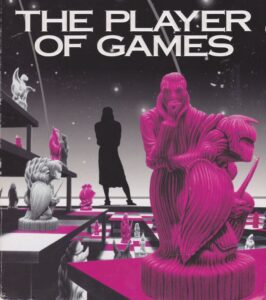 In the vast realm of science fiction literature, there are works that stand out as seminal, genre-defining pieces that leave an indelible mark on both readers and the genre itself. One such literary gem is “Player of Games” by the renowned British author Iain M. Banks. Published in 1988, this novel is the second installment …
In the vast realm of science fiction literature, there are works that stand out as seminal, genre-defining pieces that leave an indelible mark on both readers and the genre itself. One such literary gem is “Player of Games” by the renowned British author Iain M. Banks. Published in 1988, this novel is the second installment … - Exploring “Complicity”: A Dark Thriller Unveiling the Shadows of Guilt
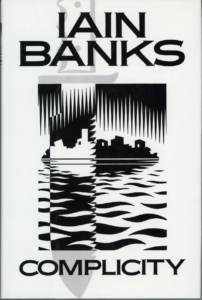 In the realm of crime fiction, there exists a class of novels that don’t just entertain but also challenge our moral compass. One such masterpiece is “Complicity,” a gripping thriller penned by the celebrated Scottish author, Iain Banks. With its intricate plot, morally ambiguous characters, and thought-provoking themes, “Complicity” has left an indelible mark on …
In the realm of crime fiction, there exists a class of novels that don’t just entertain but also challenge our moral compass. One such masterpiece is “Complicity,” a gripping thriller penned by the celebrated Scottish author, Iain Banks. With its intricate plot, morally ambiguous characters, and thought-provoking themes, “Complicity” has left an indelible mark on … - Stanisław Lem: Exploring the Visionary Worlds of a Sci-Fi Maestro
 Unlocking the Genius of Stanisław Lem: A Journey Through His Worlds Stanisław Lem, the visionary Polish author, was a literary luminary whose imagination knew no bounds. Born in Lviv, Poland, in 1921, and passing away in 2006, Lem left an indelible mark on the world of science fiction. His literary prowess transcended boundaries, captivating readers …
Unlocking the Genius of Stanisław Lem: A Journey Through His Worlds Stanisław Lem, the visionary Polish author, was a literary luminary whose imagination knew no bounds. Born in Lviv, Poland, in 1921, and passing away in 2006, Lem left an indelible mark on the world of science fiction. His literary prowess transcended boundaries, captivating readers … - Exploring “Seveneves”: A Sci-Fi Epic of Catastrophe and Survival
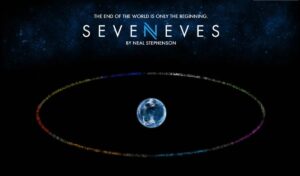 In the vast and ever-evolving realm of science fiction literature, certain books stand out as game-changers, pushing the boundaries of imagination and challenging our understanding of the universe. “Seveneves” by Neal Stephenson is undeniably one of those groundbreaking works. With a narrative that spans millennia and explores the resilience of humanity in the face of …
In the vast and ever-evolving realm of science fiction literature, certain books stand out as game-changers, pushing the boundaries of imagination and challenging our understanding of the universe. “Seveneves” by Neal Stephenson is undeniably one of those groundbreaking works. With a narrative that spans millennia and explores the resilience of humanity in the face of … - Neil Gaiman: The Maestro of Multi-Genre Storytelling
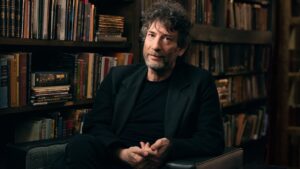 Unlocking the Magic of Neil Gaiman’s Literary Universe Neil Gaiman: a name that resonates with readers, writers, and dreamers alike. With an extraordinary ability to traverse genres, delve into the depths of mythology, and spin tales that touch the soul, Neil Gaiman stands as a literary icon. In this exploration of his work, we’ll delve …
Unlocking the Magic of Neil Gaiman’s Literary Universe Neil Gaiman: a name that resonates with readers, writers, and dreamers alike. With an extraordinary ability to traverse genres, delve into the depths of mythology, and spin tales that touch the soul, Neil Gaiman stands as a literary icon. In this exploration of his work, we’ll delve … - Milan Kundera: A Literary Luminary’s Exploration of Human Existence
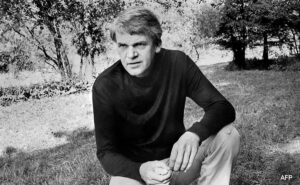 Unlocking the World of Milan Kundera: A Deep Dive into His Literary Legacy If there’s one name that stands out in the realm of contemporary literature, it’s Milan Kundera. With his thought-provoking narratives, philosophical musings, and captivating storytelling, Kundera has left an indelible mark on the literary landscape. In this comprehensive exploration, we delve into …
Unlocking the World of Milan Kundera: A Deep Dive into His Literary Legacy If there’s one name that stands out in the realm of contemporary literature, it’s Milan Kundera. With his thought-provoking narratives, philosophical musings, and captivating storytelling, Kundera has left an indelible mark on the literary landscape. In this comprehensive exploration, we delve into …


